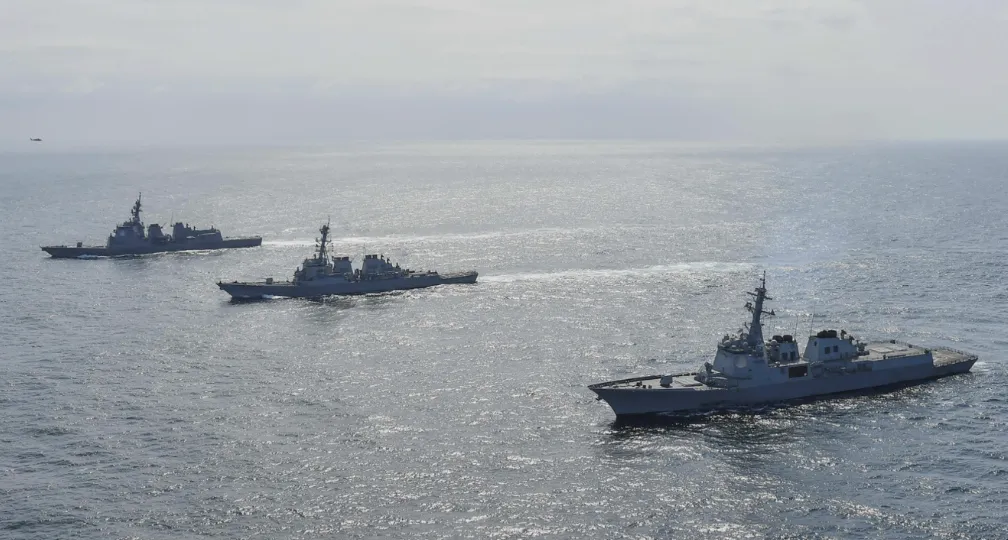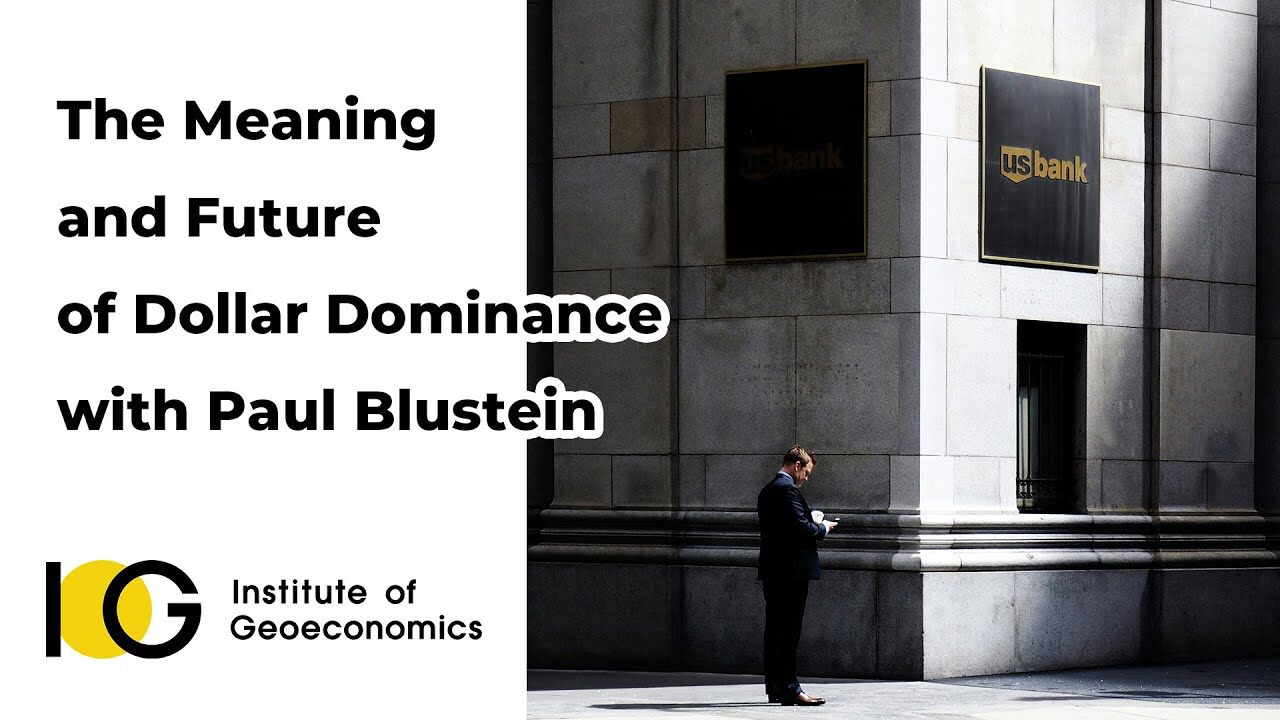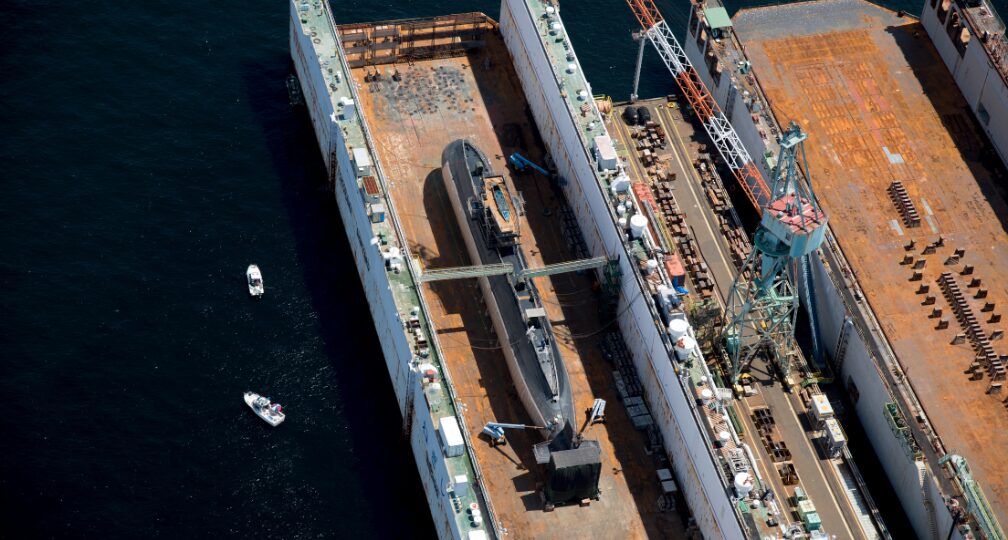Acquiring counterstrike capabilities is no simple matter for Japan

Visiting Fellow, Institute of Geoeconomics
In December 2022, the Japanese government stated in its National Security Strategy and National Defense Strategy its decision to possess counterstrike capabilities, saying it would be “a key to deterring invasion against Japan.”
The National Defense Strategy says Japan will fundamentally reinforce the current multidomain defense force and “will possess a capability that makes the opponent realize that the goal of invasion of Japan is not achievable by military means, and that the damage the opponent will incur makes the invasion not worth the cost.”
Under the strategy, deterrence by denial — denying adversaries’ prospects of operational success — and deterrence by punishment — U.S. extended deterrence with nuclear deterrence at its core — are the essence of Japan’s deterrence capabilities.
The Defense Buildup Program, also approved in December 2022, states that Japan will focus on strengthening seven areas by fiscal 2027 to strengthen defense capabilities: standoff defense capabilities; integrated air and missile defense capabilities; unmanned defense capabilities; cross-domain operation capabilities; command-and-control and intelligence-related functions; mobile deployment capabilities and civil protection; and sustainability and resiliency.
Within the program, counterstrike capabilities are categorized under integrated air and missile defense capabilities as “the Self-Defense Forces’ capabilities that leverage standoff defense capability and other capabilities” in case an armed attack against Japan occurs using ballistic missiles and other means.
This can be interpreted as Japan attempting to strengthen its deterrence by denial through complementing its missile defense system, whose superiority has comparatively declined due to recent improvements in missile technologies.
However, Japan lacks operation plans or a defense build-up plan to materialize the concept of counterstrike capabilities, which makes it difficult to identify the equipment necessary to build such capabilities and the challenges that need to be addressed.
This article will discuss the counterstrike capabilities that Japan must possess and will look into the challenges in building such capabilities by fiscal 2027.
Japan’s counterstrike capabilities
Exercising counterstrike capabilities is different from preemptive strikes, which are conducted before any military attacks occur, as it is a self-defense measure that will be executed based on three conditions for the use of force: if Japan is attacked or an attack on a friendly nation threatens Japan’s survival; there is no other appropriate means to repel the attack; and as long as any use of force is kept to a minimum.
Still, that would be an “attack” in the sense that it is an act of destroying a target.
A kill chain — a military concept that describes the process militaries use to attack targets — consists of a series of steps: find, fix, track, target and engage targets, then assess strike results.
It is necessary for Japan to build its kill chain and possess counterstrike capabilities to the extent of being able to complement missile defense systems by fiscal 2027.
Then how do these capabilities differ from the kill chain that has been built by the Self-Defense Forces?
Considering that Japan is surrounded by the sea, in case the country exercises counterstrike capabilities, it would have to hit targets in adversaries’ territories that are between several hundred and several thousand kilometers away.
Such geographical features are what make the new operations completely different from operations within Japan’s territory assumed by the SDF. This means the SDF will have to collect information on attack targets in areas where forward observers and reconnaissance planes don’t or can’t operate.
Such a situation is likely to greatly influence the finding, fixing and tracking of targets and assessment of strike results in the kill chain process.
In other words, it is indispensable for Japan to include in its counterstrike capabilities not only command and control capabilities to make judgments on long-range missiles and attacks, but also intelligence, surveillance, reconnaissance and targeting (ISRT) assets, as well as information processing and conveying capabilities.
Standoff missiles
In December 2018, the government decided on a new policy to strengthen its standoff defense capability — the capability to strike adversarial invasion forces by using standoff weapons capable of striking a distant target from outside the ranges of the adversary’s attack — and proceeded with building up defense equipment to get ready to introduce long-range missiles.
The Defense Ministry moved forward a part of its plans to obtain standoff missiles and is expected to acquire U.S.-made Tomahawk Block IV cruise missiles in fiscal 2025, and the Tomahawk Block V, the upgraded version of Type-12 guided surface-to-ship missile and the upgraded prototype of Hyper Velocity Gliding Projectile Block 2A for the defense of remote islands in fiscal 2026.
The ministry also allocated funds in the fiscal 2024 budgetary requests to acquire Norwegian-made Joint Strike Missile cruise missiles and U.S.-made Joint Air-to-Surface Standoff Missile Extended Range, as well as developing other standoff missiles.
In fiscal 2027, Japan is expected to be equipped with a capability to fire standoff missiles, including prototypes, from land, sea and air platforms.
Furthermore, considering that Tomahawk is a land attack missile fired from the Maritime Self-Defense Force’s Aegis destroyers and the upgraded version of the Type-12 guided surface-to-ship missile is an anti-ship missile fired from a ground launcher of the Ground Self-Defense Force’s field artillery units, the key to building a kill chain lies in the possession of cross-domain command and control capability.
Regarding this, the Defense Ministry is preparing to establish a Permanent Joint Headquarters in fiscal 2024 to command the Ground, Maritime and Air Self-Defense Forces in an integrated manner.
Although it is not clearly stated who will be in charge of operating counterstrike capabilities, it is likely that the Permanent Joint Headquarters will have command in practice, as the Defense Buildup Program says, “Operation of this counterstrike capability will be conducted under unified command and control based on joint operations.”
Equipping ISRT assets
ISRT assets that make up counterstrike capabilities are mainly limited to satellites and unmanned aerial vehicles due to Japan’s geographic features.
As for satellites, in addition to the four main information gathering satellites currently in operation, the Cabinet Satellite Intelligence Center plans to launch four additional satellites between fiscal 2026 and fiscal 2028 to boost dynamic surveillance capabilities.
On top of that, the Defense Ministry states in the Defense Buildup Program that the ministry and the SDF will establish a satellite constellation to improve the detection and tracking of targets, while enhancing Japan-U.S. cooperation and utilizing images from commercial satellites as supplementary endeavors.
As for unmanned aerial vehicles that can cover a wide range of areas, the Air Self-Defense Force has the RQ-4B Global Hawk Block 30i. Japan also plans to develop by fiscal 2027 target observation rounds, although that is likely to be managed as single-use guided missiles rather than unmanned planes.
In this way, the government aims to build a wide-range, high-frequency and high-precision information gathering network by creating a satellite constellation through its own efforts to equip satellites, as well as strengthening cooperation with the United States and utilizing commercial satellites.
In addition, there is a possibility for Japan to use some unmanned aerial vehicles as ISRT assets necessary to obtain counterstrike capabilities.
However, Japan faces some challenges regarding the defense buildup of ISRT assets when it is seen as an element that builds a kill chain for counterstrike capabilities.
The first challenge is whether Japan can construct information-gathering platforms through which it can make proactive decisions.
While cooperation with the U.S. is necessary, if Japan is to exercise counterstrike capabilities to attack an adversary in case of a contingency, it is indispensable for Tokyo to possess the ability to assess by itself the accuracy of the information gathered.
Moreover, Japan needs to have the ability to gather and process information on its own without depending on other countries to fulfill the principle of military objective — the principle of distinction requiring parties to an armed conflict to distinguish between civilian objects and military objectives at all times — and take preventive measures to minimize collateral damage, which are the foundational concepts of international humanitarian law.
Nevertheless, in establishing Japan’s own information-gathering system, the issue is whether private-sector satellite operators can provide stable and preferential services to the government and the SDF, even in times of contingency.
For instance, private-sector satellite operators could be affected by excess demand due to private-sector demand, or demand from government ministries other than the Defense Ministry, as well as possible threats from so-called killer satellites.
To cope with such a situation, in addition to boosting cooperation with the U.S. and others and upgrading Japan’s information-gathering satellite network, it is necessary to build a framework to allow the government and the SDF to have stable and preferential access to services, including remote sensing, offered by private-sector satellites.
Just as the Defense Ministry is already working on an X-band communication satellite project for government and military use, one idea is to secure a stable information-gathering system by making clear the sharing of roles between the public and private sectors such as through signing private finance initiative contracts — a way of financing public-sector projects through the private sector — with satellite operators, or assigning satellite operators as designated public institutions under the law concerning the protection of people in armed attack situations.
The second issue is that the concept to operate counterstrike capabilities, particularly the specifying of attack targets, is insufficient.
The government says it is difficult to specify what would be subject to counterattacks, as it depends on the size and conditions of military attacks. But the means and capabilities for information gathering differ according to the type of target information that needs to be collected.
For example, when an attack is targeted at a moving object such as a transporter erector launcher, the target has to be tracked in real time, meaning a high temporal resolution, or a high observation frequency, is needed.
Moreover, effective information-gathering tools and abilities differ depending on whether the targets are located on land or at sea.
Deception through the use of decoys should also be taken into account.
Therefore, Japan should clarify how to operate its counterstrike capabilities and what kind of information-gathering tools and abilities are needed in acquiring such capabilities.
To track targets in real time and detect deceptions that use decoys, there are limits to gathering information only via satellites. Japan needs to consider role-sharing and the collaborative use of different tools including satellites and drones to make the best use of each of their features.
Because counterstrike capabilities have the characteristics of being exercised on adversaries’ territories, targets for attack could be decided based not only on tactical validity but also on political judgments.
Thus, in compiling specific operation plans for such capabilities, discussions need to be conducted not only within the Defense Ministry, but also on various levels.
Viable counterstrike capability
Under the National Defense Program Guidelines for fiscal 2019 and beyond, released in December 2018, the government focused on acquiring and strengthening capabilities in new domains such as space, cyberspace and the electromagnetic spectrum, and has worked on boosting information-collecting and analyzing functions using information-gathering satellites and private-sector satellites.
However, Japan made a significant policy shift in a bid to acquire counterstrike capabilities, which it had not obtained based on its policy judgment.
Due to changes in operational features along with the shift, the country is now seeking to bolster capabilities to find, fix and track attack targets under the environment in which usable tools would be limited to satellites and unmanned aerial vehicles.
In particular, reinforcing Japan’s own information-gathering system and building a steady defense power with specific plans to operate counterstrike capabilities are challenges that need to be solved when building effective counterstrike capabilities with a closed kill chain.
Possessing standoff missiles alone doesn’t mean counterstrike capabilities have been acquired.
What is important for Japan’s defense is to steadily enhance its deterrence and response power, including building counterstrike capabilities to prevent other countries from considering military attacks.
[Note] This article was posted to the Japan Times on December 14, 2023: https://www.japantimes.co.jp/commentary/2023/12/14/japan/japan-counterstrike-capability/
(Photo Credit: The South Korean Defence Ministry/Reuters / Aflo)

Geoeconomic Briefing
Geoeconomic Briefing is a series featuring researchers at the IOG focused on Japan’s challenges in that field. It also provides analyses of the state of the world and trade risks, as well as technological and industrial structures (Editor-in-chief: Dr. Kazuto Suzuki, Director, Institute of Geoeconomics (IOG); Professor, The University of Tokyo).
Disclaimer: The opinions expressed in Geoeconomic Briefing do not necessarily reflect those of the International House of Japan, Asia Pacific Initiative (API), the Institute of Geoeconomics (IOG) or any other organizations to which the author belongs.
-
 Analysis: Ready for a (Tariff) Refund?2025.12.24
Analysis: Ready for a (Tariff) Refund?2025.12.24 -
 China, Rare Earths and ‘Weaponized Interdependence’2025.12.23
China, Rare Earths and ‘Weaponized Interdependence’2025.12.23 -
 Are Firms Ready for Economic Security? Insights from Japan and the Netherlands2025.12.22
Are Firms Ready for Economic Security? Insights from Japan and the Netherlands2025.12.22 -
 Is China Guardian of the ‘Postwar International Order’?2025.12.17
Is China Guardian of the ‘Postwar International Order’?2025.12.17 -
 Japan-India Defense in a Fragmenting Indo-Pacific2025.12.10
Japan-India Defense in a Fragmenting Indo-Pacific2025.12.10
 The “Economic Security is National Security” Strategy2025.12.09
The “Economic Security is National Security” Strategy2025.12.09 Event Report: The Trump Tariffs and Their Impact on the Japanese Economy2025.11.25
Event Report: The Trump Tariffs and Their Impact on the Japanese Economy2025.11.25 Trump’s Tariffs Might Be Here to Stay – No Matter Who’s in Power2025.11.28
Trump’s Tariffs Might Be Here to Stay – No Matter Who’s in Power2025.11.28 The Tyranny of Geography: Okinawa in the era of great power competition2024.02.09
The Tyranny of Geography: Okinawa in the era of great power competition2024.02.09 The Real Significance of Trump’s Asia Trip2025.11.14
The Real Significance of Trump’s Asia Trip2025.11.14















